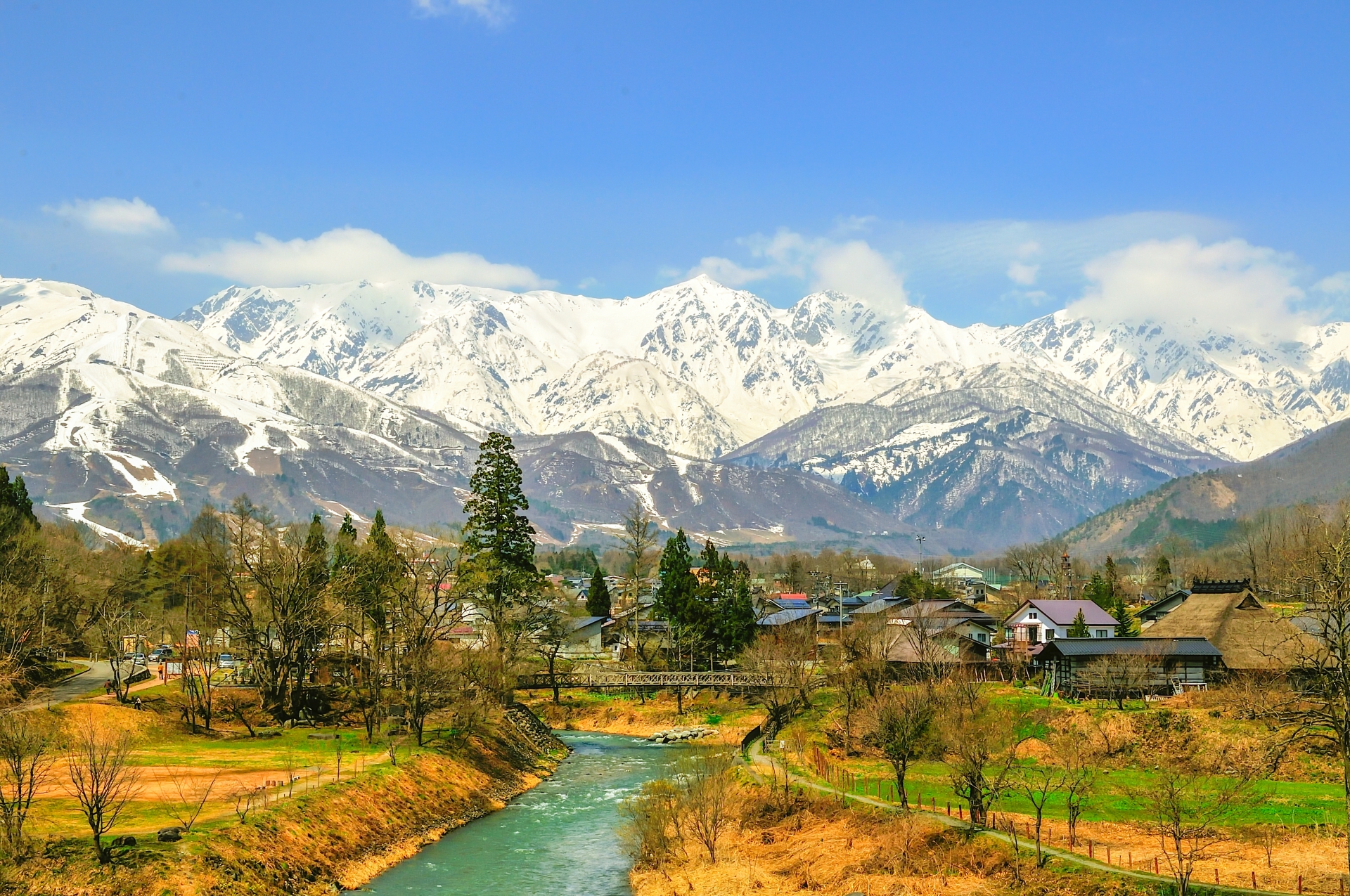
Get ¥3 Million to Move to the Japanese Countryside: Exploring the Relocation Incentive
The pandemic has brought about significant changes in the way we work, leading to more flexibility in remote working and inspiring diverse and creative living choices. Now, an increasing number of urban dwellers, including younger generations, are opting to leave Tokyo and other major cities, seeking their dream lifestyles in smaller regional areas or the picturesque Japanese countryside. The government is also embracing this trend by offering a generous financial incentive known as the “relocation incentive (移住支援金)” In this article, we will delve into the current relocation trend and explore how you can qualify for this financial aid.
*December 2022 update: Beginning in April 2023, the government will increase the incentive paid out per child from 300,000 JPY to 1 million JPY. A family of four therefore can receive a total of 3 million JPY instead of 1.6 million JPY. Learn more
Index
- Relocation trends
- Overview of the incentive program
- How much is the relocation incentive?
- Who is qualified for the relocation incentive?
- Which municipalities are offering the relocation incentive?
- Career/work options after subsidized relocation
- How to get more information
1. Relocation trends
The rise of remote working has led to a significant exodus from central Tokyo, with over 15,000 more people moving out than moving in during 2021, marking the first time in a decade. Simultaneously, a non-profit organization that offers consultation services for relocation reported a record-high number of 49,514 consultations in 2021.
Many individuals are choosing neighboring prefectures as their new homes, with Shizuoka being the top choice, closely followed by Fukuoka and other areas with good connectivity to the greater Tokyo region, such as Yamanashi, Nagano, and Gunma. While remote working is on the rise, the majority of prospective relocators (64.6%) are interested in finding local jobs, followed by farming (15.6%) and starting local businesses (15.1%), with teleworking accounting for only 3.2%. (n=6,939)
2. Overview of the incentive program
In sum, the financial aid is granted jointly by prefectures and municipalities to persons or families who live or commute to the Tokyo 23 wards and will move outside of the Greater Tokyo* to live or work there for over 5 years. (*The Greater Tokyo area includes Tokyo, Saitama, Chiba, and Kanagawa prefectures, excluding the following “disadvantaged” municipalities: Tokyo: Hinohara, Okutama, Oshima, Toshima, Niijima, Kozushima, Miyake, Mikurajima, Hachijo, Aogashima, Ogasawara/
Saitama: Chichibu, Hanno, Honjo, Tokigawa, Yokoze, Minano, Ogano, Higashi Chichibu, Kamikawa/Chiba: Tateyama, Asahi, Katsuura, Kamogawa, Futtsu, Isumi, Minamiboso, Tosho, Chonan, Otaki, Onjuku, Kyonan/ Kanagawa: Yamakita, Manazuru, Kiyokawa)
3. How much is the relocation incentive?
The base amount for a family is 1 million JPY (7,510 USD). For every child under 18 years old, an additional 1 million JPY will be provided. (Starting in April 2023; before that, 300,000 JPY(2,253 USD) per child.) Thus, for instance, a family of 4 with two underage children can receive a total of 3 million JPY (22,531 USD). A single-person household is also eligible for a 600,000 JPY (4,506 USD) incentive.
4. Who is qualified for the relocation incentive?
To be eligible for the incentive, you must either currently (1) live in one of the 23 wards of Tokyo or (2) commute to the 23 wards from the Greater Tokyo area. You also must have lived or commuted there for a total of 5 years in the past 10 years before the relocation. In addition, you will have to intend to live more than 5 years in the same municipality after the relocation to receive the subsidy. Foreigners can also be qualified, but it is important to note that there are visa requirements. Your residency status must either be a permanent resident (永住者/PR), a spouse to a Japanese national or a PR(日本人または永住者の配偶者), a long-term resident (定住者), or a special long-term resident (特別定住者).
5. Which municipalities are offering the relocation incentive?
Out of 48 prefectures in Japan, 44 prefectures excluding Tokyo, Kanagawa, Osaka, and Okinawa are offering the financial aid for relocation. Some of the “disadvantaged” areas in Saitama and Chiba (e.g., Chichibu, Tateyama, and Futtsu) are also a part of the program. However, even within the prefectures participating in the program, some cities and towns do not offer the subsidy. Notable examples include Niseko and Kutchan in Hokkaido, Kyoto, and Kobe. These highly desirable locations are often exempt from receiving subsidies due to their already strong economic activity and reputation. A complete list of all participating municipalities can be found here.
6. Career/work options after subsidized relocation
To be eligible for the incentive program, you need to be engaging in or meeting either of the following four career/work options:
(1) Find a job locally
(You must use the municipality’s designated job-matching services upon finding employment. Example of Shizuoka)
(2) Continue your current job by working remotely
(3) Start your own business
(You must be selected for the municipality’s entrepreneurship grant within a year of relocation. Example of Yamanashi’s grant)
(4) Other requirements set by the municipality
7. How to get more information
If you have already identified the municipalities you might want to migrate to, you can contact them directly to discuss the details. Several prefectures have set up representative offices in Tokyo to make it easier for potential settlers to reach out and get information. You can find contact information for all participating municipalities here.
For those still considering relocating but would like to gain a better understanding of what to expect, you can consult with Furusato Kaiki Shien Center (ふるさと回帰支援センター, “Hometown Return Support Center”), the aforementioned non-profit organization offering support and resources for relocation. Their office in Yurakucho, Tokyo, has a wealth of materials, such as brochures and pamphlets, which you can simply drop by and browse around. Their experienced and knowledgeable staff members offer both in-person and online consultation, and all their services are provided free of charge. However, in both cases, the services are likely provided in Japanese only. If you want to gain information in English or your mother tongue, you might want to bring someone who speaks fluent Japanese to your consultation.
We hope this article has been helpful in exploring the opportunities of moving to the Japanese countryside! Let us know in the comments if you want to know more about rural migration in Japan.
*Eligibility and requirements for the relocation incentive may differ by municipality. Please consult with responsible offices to determine if they meet your needs.
Resources:
Outline of the relocation incentive and the requirements by the Cabinet Office: https://www.chisou.go.jp/sousei/ijyu_shienkin.html
Featured photo: Hakuba in the winter
*Information as of December 2022. USD-JPY conversion rate as of Dec. 29, 2022.
All information and data contained on this Website are for informational purposes only, and are not intended to be a source of advice with respect to the material presented.



